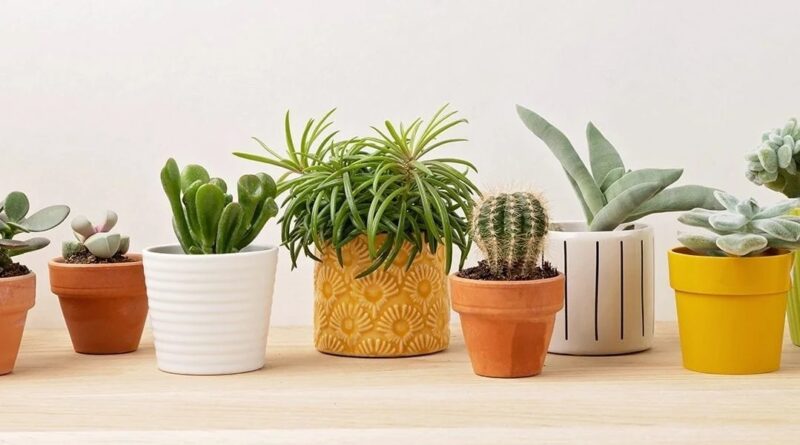Outdoor Plant Pots Selection Guide And Placement Ideas For Homes
Outdoor plant pots are more than just containers for your plants; they are a key element in enhancing the aesthetic appeal of your home’s exterior. Their strategic placement and thoughtful selection can transform patios, balconies, and gardens into visually stunning and inviting spaces. This guide delves into the world of outdoor plant pots, offering insights on selection, placement, plant choices, maintenance, and DIY customization, to help you elevate your outdoor decor.
Selecting the Right Outdoor Plant Pots
Choosing the right outdoor plant pots is a crucial step in creating a beautiful and functional garden space. The right pots not only support the health and growth of your plants but also enhance the aesthetic appeal of your outdoor areas. When selecting pots, factors like size, material, and drainage play a pivotal role.
Assessing Size and Proportion
The size of the pot should be proportionate to the plant. A pot too small can restrict root growth and lead to poor plant health, while one too large may cause the soil to dry unevenly. For growing ficus plants and other big shady shrubs, choose a pot that offers room for growth, typically one that is 2 to 4 inches larger in diameter than the current pot. Consider the mature size of the plant and select a pot that can accommodate its growth over the next few years.
Material Matters: Choosing the Right Type
Each material used for outdoor plant pots has its unique benefits and aesthetic appeal:
Terra Cotta Pots
Breathability: Terra cotta’s porous nature allows air and water to pass through the walls, promoting healthy root systems.
Suitability: Ideal for moisture-loving plants, as the material helps regulate soil moisture levels.
Ceramic Pots
Durability: Ceramic is robust and can withstand varying weather conditions.
Decorative Quality: Often available in a variety of colors and glazes, ceramic pots can complement any outdoor décor.
Plastic Pots
Lightweight: Easy to move around, making them ideal for balconies and decks.
Weather-Resistant: Plastic pots do not crack in frost and are generally more durable in harsh weather conditions.
Importance of Drainage
Drainage is a critical aspect of selecting outdoor plant pots. Without proper drainage, water can accumulate at the bottom of the pot, leading to root rot and other health issues for the plant. Ensure pots have adequate drainage holes and consider adding a layer of gravel or broken pottery at the bottom to improve water flow.
Matching Plants to Pots
Finally, it’s important to match the pot to the specific needs of the plant. Consider the plant’s water, light, and soil requirements. For instance, succulents prefer dry conditions and are well-suited to terra cotta pots, which wick away excess moisture. On the other hand, plastic pots are better for water-loving plants due to their non-porous nature.
Placement Ideas for Outdoor Plant Pots
The placement of outdoor plant pots can transform an ordinary space into a vibrant and inviting area. Creative positioning not only elevates the beauty of your outdoor living areas but also adds functionality and character. Whether you have a spacious garden, a cozy patio, or a small balcony, thoughtful placement of plant pots can make a significant difference.
Enhancing Patios and Decks with Plant Pots
Patios and decks are prime locations for outdoor plant pots. They are the perfect canvas for creating a green oasis:
Creating a Cozy Atmosphere
Grouping Pots: Arrange pots in clusters of varying heights and sizes to create an interesting and cohesive look.
Color Coordination: Select pots and plants that complement the existing outdoor furniture and décor.
Functional Arrangement
Space Definition: Use larger pots to define different areas within the space, such as dining or lounging areas.
Privacy Screens: Position taller plants in pots to act as natural privacy screens, offering a secluded and intimate setting.
Balcony Gardening with Plant Pots
For those with limited space, balconies offer a great opportunity to enjoy urban gardening:
Maximizing Small Spaces
Vertical Gardening: Utilize wall-mounted pots or hanging baskets to create a vertical garden, saving floor space.
Balcony Rail Planters: Install rail planters for a seamless and space-efficient way to display greenery.
Creating Visual Appeal
Layering Pots: Arrange pots in a staggered fashion to create depth and visual interest.
Color Pops: Use brightly colored pots or flowering plants to add a vibrant touch to the balcony space.
Grouping Pots for Visual Impact
Strategically grouping pots can create a visually appealing display:
Varying Heights and Textures
Mix and Match: Combine plants of different heights, textures, and colors for a dynamic and attractive grouping.
Thematic Groupings: Create themes with your plant choices, such as a herb garden or a tropical oasis.
Seasonal Displays
Rotating Plants: Change the plants according to the season for a fresh and updated look throughout the year.
Conclusion
Outdoor plant pots are a versatile and essential element in home decor. They offer the perfect blend of functionality and aesthetics, allowing you to personalize and enhance your outdoor living spaces. Whether through careful selection, creative placement, or DIY customization, outdoor plant pots can significantly elevate the charm and appeal of your home. Embrace these tips and ideas to transform your outdoor areas into beautiful, inviting, and sustainable spaces.

